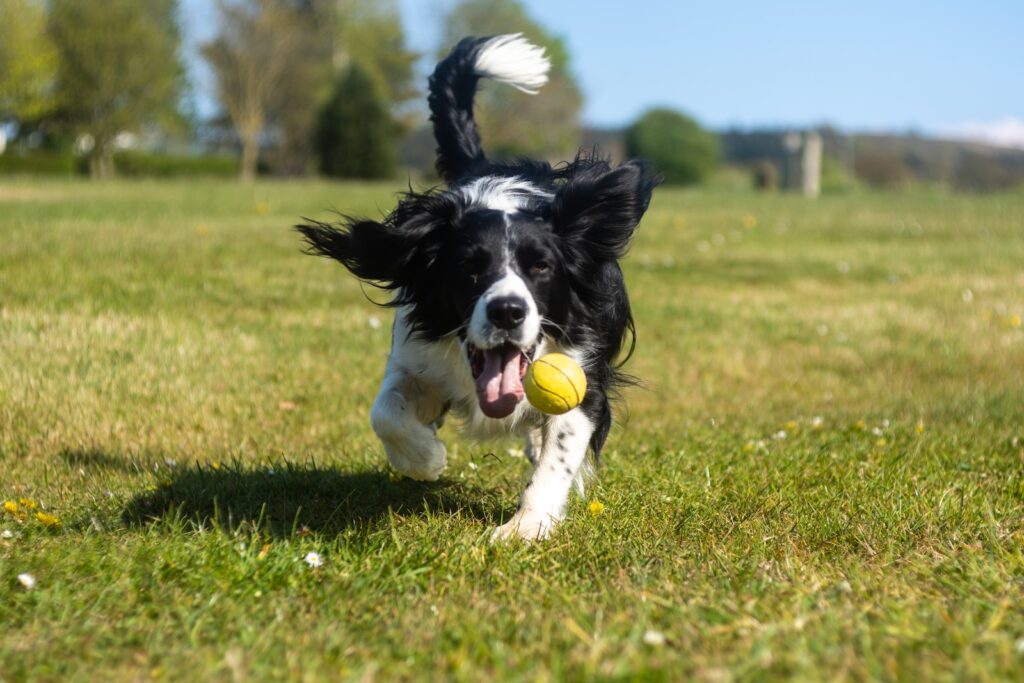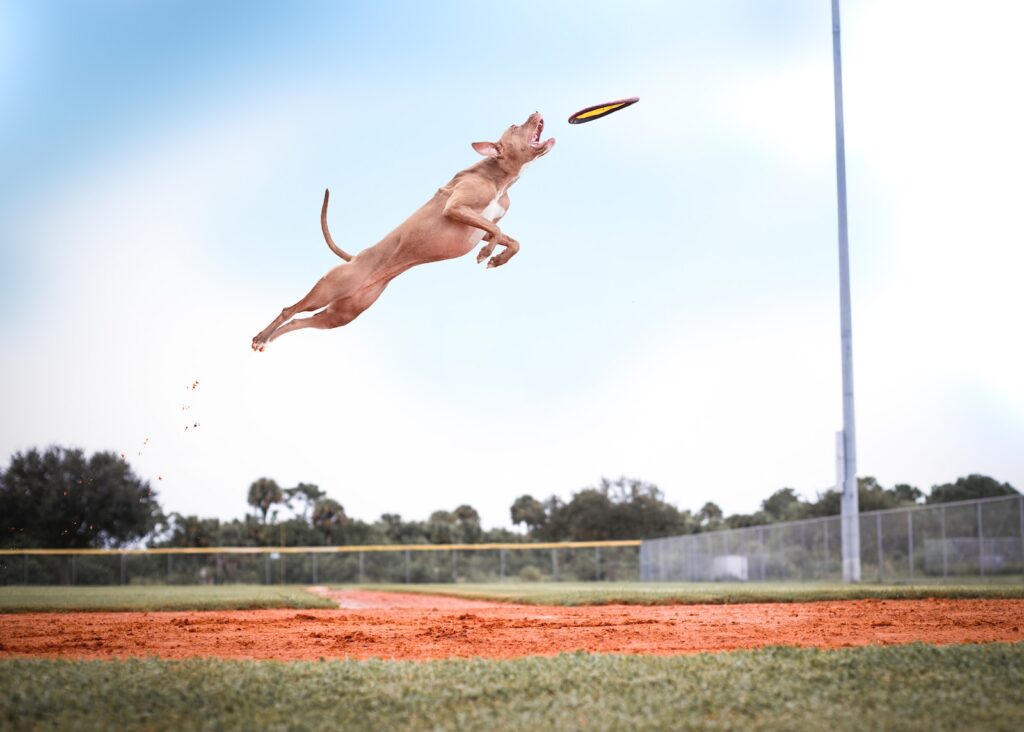Playing fetch is a classic game loved by both dogs and their owners. It’s not just a fun activity but also an excellent way to provide mental and physical exercise for your furry companion. In this blog post, we’ll explore the steps to teach your dog to fetch, highlighting the benefits of this game for both you and your canine friend. So, get ready to unleash the joy and excitement of fetch as you embark on this rewarding training journey.
By the way – if you’re looking for a comprehensive dog training program to dive into the fundamentals of dog training, I highly recommend Adrienne Farricelli’s “Brain Training For Dogs” program.
It’s a great program that really offers a deep dive so that you’ll be able to understand the why, as well as the how, of dog training.
Why Teach Your Dog to Fetch?
Before we dive into the how-to of teaching fetch, let’s discuss why it’s such a fantastic activity for your dog:
Physical Exercise:
Fetch is a great way to help your dog burn off excess energy. Regular play sessions can keep them fit and maintain a healthy weight.
Mental Stimulation:
Fetch also provides mental exercise as your dog learns to retrieve the object and follow commands. It’s a fantastic way to keep their mind sharp.

Bonding:
Playing fetch enhances the bond between you and your dog. It’s an opportunity for quality time together and fosters trust and communication.
Obedience Training:
Teaching your dog to fetch reinforces important commands like “retrieve,” “drop it,” and “stay,” which are valuable for overall obedience.
Socialization:
Fetch can also be a social activity if you play with other dogs at a dog park. It encourages socialization and helps dogs learn appropriate play behaviors.
The Step-by-Step Guide
Now, let’s break down the process to teach your dog to fetch into manageable steps:
1. Introduction to the Toy:
Begin by introducing the fetch toy to your dog. Let them sniff it, play with it, and get familiar with the toy.

2. Basic Commands:
Ensure your dog knows basic commands like “sit,” “stay,” and “drop it.” These commands are fundamental to the fetch game.

3. Engage Interest:
Excite your dog’s interest in the toy by playing with it yourself. Wave the toy around, roll it, or toss it gently, encouraging your dog to interact with it.

4. The Fetch Command:
Say “fetch” or any chosen command while throwing the toy a short distance. Start with a short throw to keep it easy for your dog.

5. Retrieval:
If your dog goes after the toy, encourage them to pick it up. When they do, praise and reward them with a treat.

6. Return:
After retrieving the toy, your dog should return it to you. Use the “drop it” command and reward them when they comply.

7. Repetition:
Repeat the fetch and return process, gradually increasing the distance of your throws. Continue to praise and reward successful fetches.

8. Stay and Release:
Introduce “stay” as your dog becomes more proficient. This will add an extra layer of obedience. Use “release” or “okay” as the cue for them to fetch.
Teach Your Dog to Fetch: Progressing
As your dog becomes more proficient at fetch, you can gradually increase the difficulty and distance of throws. Here’s how to progress:
3.1. Distance: Gradually throw the toy further each time. Be patient, and don’t rush the process.
3.2. Variety: Use different toys to keep things exciting. Switch between balls, frisbees, and other fetch toys.
3.3. Timing: Work on your timing. As your dog goes to retrieve the toy, encourage them with commands like “fetch” or “go get it.”
3.4. Accuracy: Practice accuracy. Encourage your dog to bring the toy back to you and drop it at your feet.
3.5. Consistency: Be consistent with your commands and rewards. Consistency helps your dog understand what you expect from them.

Common Challenges and Solutions
When you teach your dog to fetch, you may encounter common challenges. Here are some solutions to address them:
Lack of Interest: If your dog isn’t interested in the toy, try different toys or engage in a more enthusiastic play with the fetch toy to pique their interest.
Not Returning the Toy: If your dog doesn’t return the toy, use a long leash to gently guide them back to you. Reinforce the “drop it” command.
Getting Distracted: Some dogs may get easily distracted during fetch. Train in a quiet area at first and gradually introduce more distractions.
Resource Guarding: If your dog guards the toy, consult a professional dog trainer to address this behavior safely.
Teaching your dog to fetch is a rewarding experience that not only provides mental and physical stimulation but also strengthens your bond. With patience, consistency, and plenty of praise, you’ll have a fetch-loving companion ready for hours of fun and exercise. So, grab your dog’s favorite fetch toy and start training – a world of excitement and enjoyment awaits both you and your furry friend!

